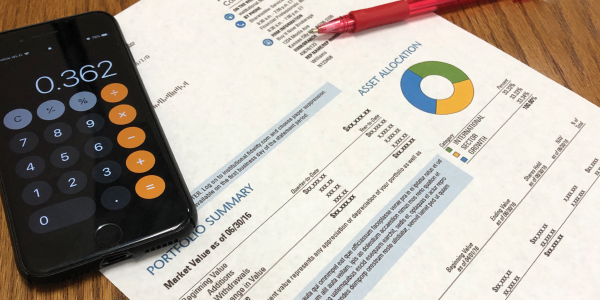Saturday May 4, 2024
Finances

FedEx Delivers Earnings
FedEx Corp. (FDX) released its second quarter earnings report on Tuesday, December 19. The company reported a decrease in quarterly revenue, resulting in its stock falling almost 11% following the release of the report.
Revenue came in at $22.2 billion for the quarter, down 3% from $22.8 billion at this time last year. This was below analysts’ expected quarterly revenue of $22.4 billion.
“FedEx has delivered an unprecedented two consecutive quarters of operating income growth and margin expansion even with lower revenue, clear evidence of the progress we are making on our transformation as we navigate an uncertain demand environment,” said FedEx CEO, Raj Subramaniam. “We are moving with speed to make our network more efficient while delivering outstanding service to our customers through the peak season with the fastest Ground network in the industry.”
The company posted net income of $900 million for the quarter or $3.55 per adjusted share. This was up 14% from $788 million or $3.07 per adjusted share one year ago.
FedEx reported a decline in revenue across nearly all major segments. The company reported a 6% decline to $10.3 billion year-over-year for their FedEx Express segment, and its FedEx Ground segment rose 3% to $8.6 billion. FedEx Freight declined 4% to $2.4 billion. Operating income increased 9% in the quarter, due primarily to FedEx’s DRIVE program initiatives and the company’s continued emphasis on service and revenue. FedEx revised its fiscal 2024 outlook up to $15.35 to $16.85 earnings per adjusted share from its prior forecast of $15.10 to $16.60 earnings per adjusted share.
FedEx (FDX) shares ended the week at $248.08, down 13% for the week.
General Mills, Inc. (GIS) posted its second quarter earnings on Wednesday, December 20. The company’s stock fell over 4% after missing revenue expectations for the second quarter.
Net sales totaled $5.1 billion for the quarter, down 2% from $5.2 billion one year ago. Quarterly revenue missed analysts’ estimates of $5.35 billion.
“While we saw a slower-than-expected volume recovery in the second quarter amid a continued challenging consumer landscape, we generated bottom-line growth thanks primarily to strong HMM cost savings,” said General Mills CEO, Jeff Harmening. “We are adapting our plans to the evolving consumer environment and staying focused on driving long-term growth, with a priority on winning through innovation, brand building, and in-store execution.”
The company reported net income of $595.5 million or $1.02 per adjusted share for the quarter. This was down 2% from $605.9 million or $1.01 per adjusted share during the same quarter last year.
General Mills reported that operating profit increased 2% to $812 million for the quarter. In the second quarter, General Mills reported a 2% decrease to $3.3 billion in net sales for its North America Retail segment. The Pet segment declined 4% to $569.3 million during the quarter. The company’s International segment was up 2% to $683.1 million in net sales. For fiscal 2024, the company anticipates organic sales to be down 1% to flat year-over-year, compared to previous projections of growth between 3% and 4%.
General Mills, Inc. (GIS) shares ended the week at $64.50, down 1.3% for the week.
BlackBerry Limited (BB) released its third quarter report on Wednesday, December 20. Despite the software company reporting an increase in revenue, its stock fell by almost 2% following release of the report.
BlackBerry’s revenue fell to $175 million for the quarter, up from $169 million at the same time last year. Despite the decrease in revenue, the company beat analysts’ expectations of $173.5 million for the quarter.
“This was a good quarter for BlackBerry. Our IoT business delivered solid revenue growth and continued its impressive design win momentum. We showed particular strength in Automotive, especially in ADAS where we continue to expand our market position,” said BlackBerry CEO, John J. Giamatteo. “We also saw a strong quarter for the Cybersecurity business, securing large strategic deals with leading government agencies that helped drive strong sequential revenue growth and margin expansion. Work has commenced to fully separate and significantly rightsize our businesses, and we expect to further reduce operating cashflow usage in Q4.”
The company reported a net loss of $21 million for the quarter. This was an increase from a net loss of $4 million during the same quarter last year.
The company reported an 8% increase to $55 million in IoT (Internet of Things) revenue. The company’s cybersecurity revenue reached $114 million, up from $106 million in revenue last year. Licensing and Other revenue was $6 million, down from $12 million last year. BlackBerry reported a loss of $31 million in net cash used in operating activities for the quarter. For the fourth quarter, the company expects revenue between $150 million and $159 million.
BlackBerry (BB) shares ended the week at $3.57, down 18% for the week.
The Dow started the week at 37,330 and closed at 37,386 on 12/22. The S&P 500 started the week at 4,726 and closed at 4,755. The NASDAQ started the week at 14,814 and closed at 14,993.
Revenue came in at $22.2 billion for the quarter, down 3% from $22.8 billion at this time last year. This was below analysts’ expected quarterly revenue of $22.4 billion.
“FedEx has delivered an unprecedented two consecutive quarters of operating income growth and margin expansion even with lower revenue, clear evidence of the progress we are making on our transformation as we navigate an uncertain demand environment,” said FedEx CEO, Raj Subramaniam. “We are moving with speed to make our network more efficient while delivering outstanding service to our customers through the peak season with the fastest Ground network in the industry.”
The company posted net income of $900 million for the quarter or $3.55 per adjusted share. This was up 14% from $788 million or $3.07 per adjusted share one year ago.
FedEx reported a decline in revenue across nearly all major segments. The company reported a 6% decline to $10.3 billion year-over-year for their FedEx Express segment, and its FedEx Ground segment rose 3% to $8.6 billion. FedEx Freight declined 4% to $2.4 billion. Operating income increased 9% in the quarter, due primarily to FedEx’s DRIVE program initiatives and the company’s continued emphasis on service and revenue. FedEx revised its fiscal 2024 outlook up to $15.35 to $16.85 earnings per adjusted share from its prior forecast of $15.10 to $16.60 earnings per adjusted share.
FedEx (FDX) shares ended the week at $248.08, down 13% for the week.
General Mills Posts Quarterly Earnings
General Mills, Inc. (GIS) posted its second quarter earnings on Wednesday, December 20. The company’s stock fell over 4% after missing revenue expectations for the second quarter.
Net sales totaled $5.1 billion for the quarter, down 2% from $5.2 billion one year ago. Quarterly revenue missed analysts’ estimates of $5.35 billion.
“While we saw a slower-than-expected volume recovery in the second quarter amid a continued challenging consumer landscape, we generated bottom-line growth thanks primarily to strong HMM cost savings,” said General Mills CEO, Jeff Harmening. “We are adapting our plans to the evolving consumer environment and staying focused on driving long-term growth, with a priority on winning through innovation, brand building, and in-store execution.”
The company reported net income of $595.5 million or $1.02 per adjusted share for the quarter. This was down 2% from $605.9 million or $1.01 per adjusted share during the same quarter last year.
General Mills reported that operating profit increased 2% to $812 million for the quarter. In the second quarter, General Mills reported a 2% decrease to $3.3 billion in net sales for its North America Retail segment. The Pet segment declined 4% to $569.3 million during the quarter. The company’s International segment was up 2% to $683.1 million in net sales. For fiscal 2024, the company anticipates organic sales to be down 1% to flat year-over-year, compared to previous projections of growth between 3% and 4%.
General Mills, Inc. (GIS) shares ended the week at $64.50, down 1.3% for the week.
BlackBerry Releases Quarterly Report
BlackBerry Limited (BB) released its third quarter report on Wednesday, December 20. Despite the software company reporting an increase in revenue, its stock fell by almost 2% following release of the report.
BlackBerry’s revenue fell to $175 million for the quarter, up from $169 million at the same time last year. Despite the decrease in revenue, the company beat analysts’ expectations of $173.5 million for the quarter.
“This was a good quarter for BlackBerry. Our IoT business delivered solid revenue growth and continued its impressive design win momentum. We showed particular strength in Automotive, especially in ADAS where we continue to expand our market position,” said BlackBerry CEO, John J. Giamatteo. “We also saw a strong quarter for the Cybersecurity business, securing large strategic deals with leading government agencies that helped drive strong sequential revenue growth and margin expansion. Work has commenced to fully separate and significantly rightsize our businesses, and we expect to further reduce operating cashflow usage in Q4.”
The company reported a net loss of $21 million for the quarter. This was an increase from a net loss of $4 million during the same quarter last year.
The company reported an 8% increase to $55 million in IoT (Internet of Things) revenue. The company’s cybersecurity revenue reached $114 million, up from $106 million in revenue last year. Licensing and Other revenue was $6 million, down from $12 million last year. BlackBerry reported a loss of $31 million in net cash used in operating activities for the quarter. For the fourth quarter, the company expects revenue between $150 million and $159 million.
BlackBerry (BB) shares ended the week at $3.57, down 18% for the week.
The Dow started the week at 37,330 and closed at 37,386 on 12/22. The S&P 500 started the week at 4,726 and closed at 4,755. The NASDAQ started the week at 14,814 and closed at 14,993.
Treasury Yields Hold Steady
U.S. Treasury yields fell mid-week to their lowest level since July as traders evaluated the prospective interest rate reductions from the Federal Reserve. Yields remained steady at the end of the week as data indicated a further deceleration in inflation for November, aligning with the Federal Reserve’s target.
On Friday, the Commerce Department announced that the Personal Consumption Expenditure (PCE) index, which measures the cost of goods and services purchased by U.S. households, fell 0.1% in November and was up 2.6% year-over-year. Core PCE, which excludes food and energy, rose 0.1% and reached an annual increase of 3.2%. The results were close to economists’ estimates of 0.1% and 3.3%, respectively.
“The Federal Open Market Committee is not yet ready to declare victory on inflation, but the outlook is much better than it was just a few months ago,” wrote chief economist at PNC Financial Services, Gus Faucher. “The slowing in core inflation opens the door for fed funds rate cuts in 2024; the timing will depend on core PCE numbers over the next few months.”
The benchmark 10-year Treasury note yield opened the week of December 18 at 3.91% and traded as high as 3.93% on Wednesday. The 30-year Treasury bond opened the week at 4.01% and traded as high as 4.10% on Wednesday.
On Thursday, the U.S. Department of Labor reported that initial claims for unemployment increased by 2,000 to 205,000 for the week ending December 16. Continuing claims remained at 1.87 million, nearly unchanged from the week prior.
“The data continue to signal that layoffs remain low,’' said chief U.S. economist at High Frequency Economics, Rubeela Farooqi. “However, demand for workers appears to be easing; job growth remains robust but has moderated, openings have moved lower ... That should help rebalance the labor market and take pressure off wages and prices, in line with (Fed) policymakers’ expectations.”
The 10-year Treasury note yield finished the week of 12/18 at 3.90%, while the 30-year Treasury note yield finished the week at 4.05%.
On Friday, the Commerce Department announced that the Personal Consumption Expenditure (PCE) index, which measures the cost of goods and services purchased by U.S. households, fell 0.1% in November and was up 2.6% year-over-year. Core PCE, which excludes food and energy, rose 0.1% and reached an annual increase of 3.2%. The results were close to economists’ estimates of 0.1% and 3.3%, respectively.
“The Federal Open Market Committee is not yet ready to declare victory on inflation, but the outlook is much better than it was just a few months ago,” wrote chief economist at PNC Financial Services, Gus Faucher. “The slowing in core inflation opens the door for fed funds rate cuts in 2024; the timing will depend on core PCE numbers over the next few months.”
The benchmark 10-year Treasury note yield opened the week of December 18 at 3.91% and traded as high as 3.93% on Wednesday. The 30-year Treasury bond opened the week at 4.01% and traded as high as 4.10% on Wednesday.
On Thursday, the U.S. Department of Labor reported that initial claims for unemployment increased by 2,000 to 205,000 for the week ending December 16. Continuing claims remained at 1.87 million, nearly unchanged from the week prior.
“The data continue to signal that layoffs remain low,’' said chief U.S. economist at High Frequency Economics, Rubeela Farooqi. “However, demand for workers appears to be easing; job growth remains robust but has moderated, openings have moved lower ... That should help rebalance the labor market and take pressure off wages and prices, in line with (Fed) policymakers’ expectations.”
The 10-year Treasury note yield finished the week of 12/18 at 3.90%, while the 30-year Treasury note yield finished the week at 4.05%.
Mortgage Rates Decline
Freddie Mac released its latest Primary Mortgage Market Survey on Thursday, December 21. The survey showed mortgage rates continue falling below 7% for the second consecutive week.
This week, the 30-year fixed rate mortgage averaged 6.67%, down from last week’s average of 6.95%. Last year at this time, the 30-year fixed rate mortgage averaged 6.27%.
The 15-year fixed rate mortgage averaged 5.95% this week, down from last week’s 6.38%. During the same week last year, the 15-year fixed rate mortgage averaged 5.69%.
“The 30-year fixed-rate mortgage remained below 7% for the second week in a row, a welcome downward trend after 17 consecutive weeks above 7%,” said Freddie Mac’s Chief Economist, Sam Khater. “Lower rates are bringing potential home buyers who were previously waiting on the sidelines back into the market and builders already are starting to feel the positive effects. A rise in home builder confidence, followed by new home construction reaching its highest level since May, signals a response to meet heightened demand as current inventory remains low.”
Based on published national averages, the savings rate was 0.46% as of 12/18. The one-year CD averaged 1.86%.
Editor’s Note: The publicly available financial information is offered as a helpful and informative service to our friends. This article is not an endorsement of any company, product or service.
This week, the 30-year fixed rate mortgage averaged 6.67%, down from last week’s average of 6.95%. Last year at this time, the 30-year fixed rate mortgage averaged 6.27%.
The 15-year fixed rate mortgage averaged 5.95% this week, down from last week’s 6.38%. During the same week last year, the 15-year fixed rate mortgage averaged 5.69%.
“The 30-year fixed-rate mortgage remained below 7% for the second week in a row, a welcome downward trend after 17 consecutive weeks above 7%,” said Freddie Mac’s Chief Economist, Sam Khater. “Lower rates are bringing potential home buyers who were previously waiting on the sidelines back into the market and builders already are starting to feel the positive effects. A rise in home builder confidence, followed by new home construction reaching its highest level since May, signals a response to meet heightened demand as current inventory remains low.”
Based on published national averages, the savings rate was 0.46% as of 12/18. The one-year CD averaged 1.86%.
Editor’s Note: The publicly available financial information is offered as a helpful and informative service to our friends. This article is not an endorsement of any company, product or service.
Published December 22, 2023





